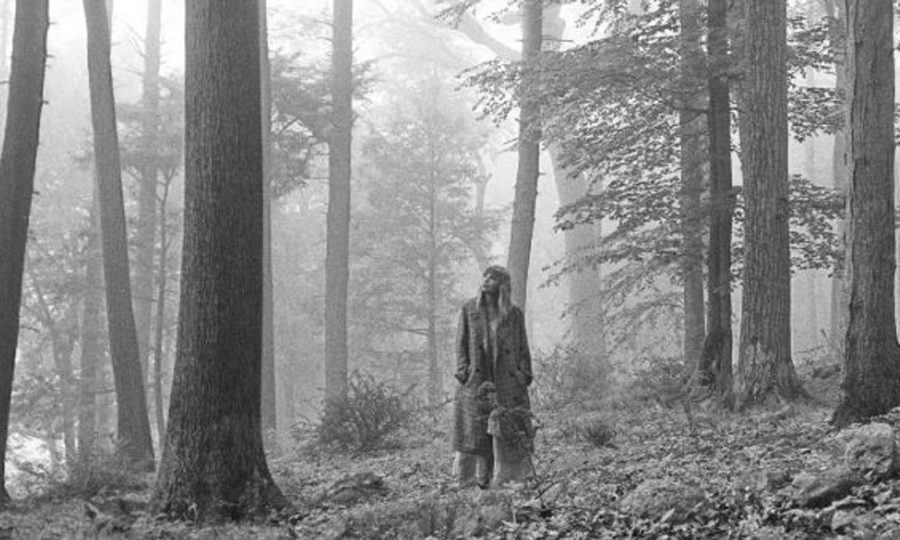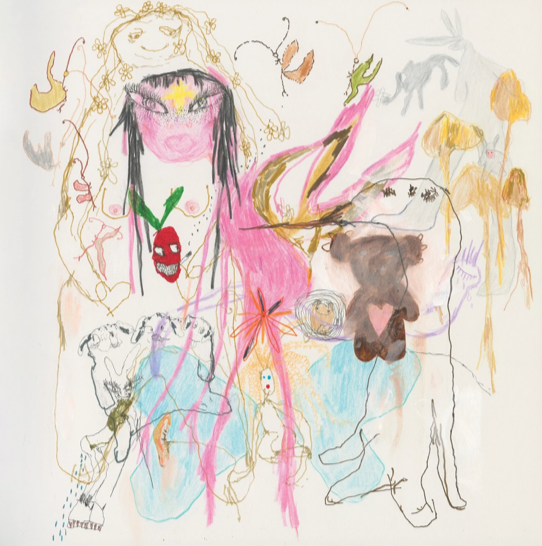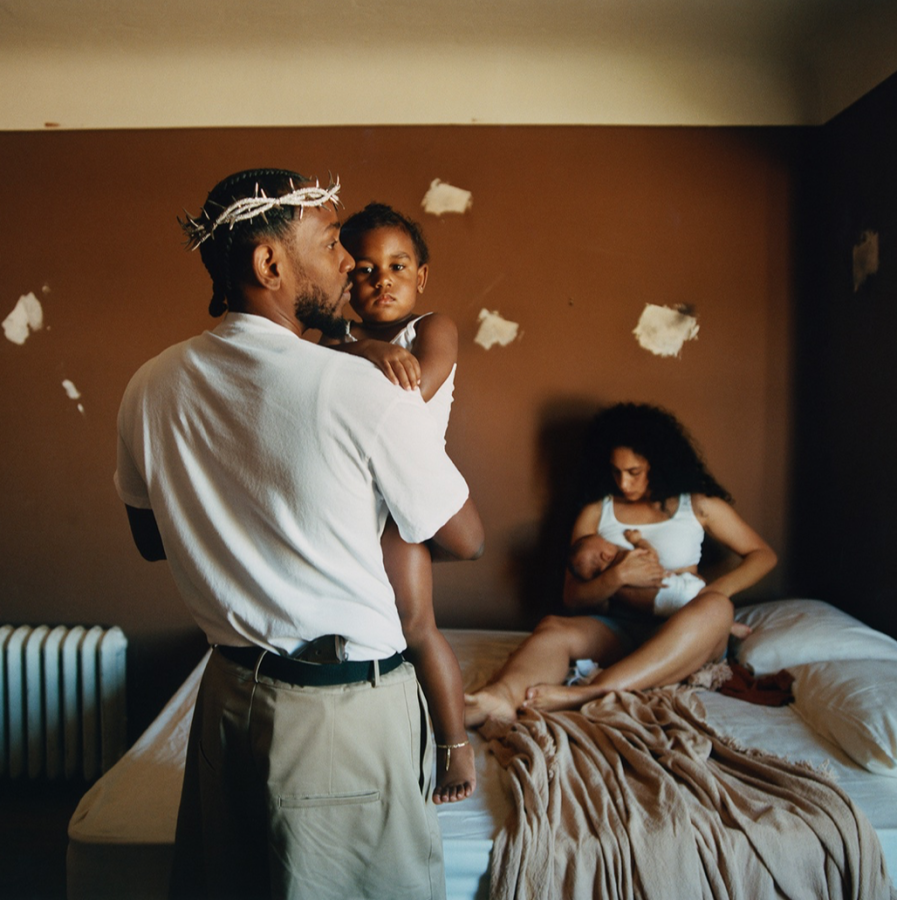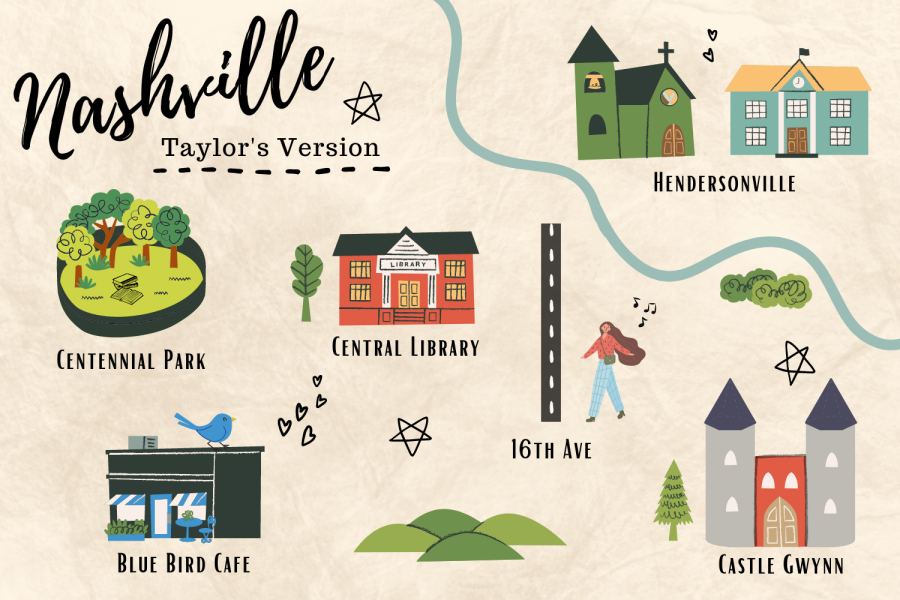“folklore” came out of nowhere.
Literal years of conspiracy theories and fan speculation preceded pop legend Taylor Swift’s seventh studio album, “Lover,” released in 2019. But her eighth album, “folklore,” had no such anticipation. Announced on social media less than 24 hours before its July 24 release, it came as a complete surprise to the Nashville singer-songwriter’s expansive fanbase, and those fans are eating it up.
“folklore” brings a totally new vibe to Swift’s repertoire, with softer instrumentals and intimate lyrics that have led many to classify the album as alternative. Delicate piano and ambient guitar riffs—electric, acoustic and even pedal steel—make their way into most songs, giving “folklore” an atmospheric, lullaby-like quality. It’s an interesting detour from her usual work, as it combines pieces of every one of her previous albums into a unique, complex vision of “the real Taylor.” To top it off, the music video for “cardigan,” a heart-wrenching symbolic visualization of how music saved her life, makes for a truly cinematic experience that ties the album together neatly and satisfyingly.
“I’m doing good, I’m on some new shit,” Swift sings in the first line of the song, opening “folklore” with an air of content confidence. It’s honestly shocking if you were expecting to hear something that sounded anything like her previous records. The first few restrained piano tones build into an ethereal, cotton candy alternative pop that is characteristic of the rest of the album. It’s the perfect contemplative “what if” song to shrug off the rest of quarantine, embrace the nostalgia of old relationships and warm up to Swift’s new sound.
Following the hopeful tone of “the 1,” this track has a much darker vibe right off the bat, as Swift introduces us to what she calls the “teenage love triangle” story hidden in three songs on “folklore.” This song, told from the perspective of Betty after James cheated on her, covers the emotional baggage of feeling unwanted with mystical imagery and references to the tragic ending of the classic tale of Peter Pan. Symbolism from the music video also suggests this relationship may mirror Swift’s own relationship with music throughout the dramatic ups and downs of her career, but the song’s resigned ending leaves us feeling like everything may be okay after all. This is especially evident when she reveals that “I knew you’d come back to me,” which tells us that her love for musical storytelling has returned, even though we never knew it left.
“the last great american dynasty”
In this true display of her lyrical genius, Swift tells the story of the late Rebekah Harkness, heir to the Standard Oil fortune, and her time spent living at her “Holiday House” (now owned by Swift) on the Rhode Island shore. It’s a song full of mid-1900s American escapism that’s also a neat history lesson, with a subtle outpouring of fierce emotions hidden in the symbolic comparison between Harkness’s fall from grace and Swift’s tumultuous path to fame. The extra reverb on the ambient electric guitar and gentle piano makes this song feel airy and light, and Swift’s mellow intonations complete the mood perfectly. Only she could make the word “gauche” work in a place like this.
Justin Vernon’s (of Bon Iver) deep, resounding voice takes center stage in this sorrowful breakup anthem about the inevitability of the end after the first big misunderstanding. With references to the unrealistic picture-perfect love we often see on movie screens, Vernon and Swift dance back and forth in a tragic musical discussion of red flags in a relationship, ultimately realizing that their desperate and determined attempts to save their toxic relationship just won’t work. Forceful and emphatic piano chords with a subdued and melancholic string accompaniment help show us that sometimes, the end is just the end—nothing more, nothing less.
In the fifth song on Swift’s studio album, the songwriter uses her poetic lyricism to illustrate the psychological ups and downs of a youthful relationship over too soon. In tune with the rest of the album, it has a notably more somber melody than the peppy Swift we got to know as preteens. During the livestream for the premiere of “cardigan” on YouTube, she also shared that she wrote the song completely solo. In your face, Taylor haters—there’s no denying her talent now. Jack Antonoff, a longtime songwriting partner and producer of Swift’s, even tweeted that it was one of his favorite pieces he’s worked on with her.
This surprisingly upbeat jam is a deeply self-aware piece in which Swift remarks on her tendency to change her personality to emulate those around her. As a direct reflection of this concept, the instrumentals are light and pretty to accompany her introspective and intimate lyrics. “I’ll show you every version of yourself tonight” can only be about her longtime boyfriend Joe Alwyn, and this makes “mirrorball” the perfect song to listen to with that special someone, out on the dance floor underneath a mirrorball (read: disco ball).
The melodic piano throughout this piece interestingly resembles the musings of Sufjan Stevens. Many have theorized that Taylor wrote this song about a childhood friend, as her descriptions of youthful innocence paint a picture of a friend trapped in an abusive home. She recalls her strange memories with said friend as if they were part of an ancient folk song, cemented in her mind in the form of love, even though the friendship no longer stands.
The middle segment of the “teenage love triangle,” “august” is laden with heavy nostalgia for the summer flings of Swift’s teenage years. In a remarkable storytelling feat, she takes on the perspective of the second, unnamed girl in the triangle (the one James cheated on Betty with) to tell this hopeful tale of romantic longing and a love that could never be. The muted saxophone, campfire-style guitar riffs and a powerful and pronounced strings section during a long, ambient passage make this piece feel like the ending of an indie teen movie where the characters drive along the beach at sunrise. It’s almost as if someone took this song and added a warm and fuzzy Photoshop “glow” effect to it—or, at least, that’s how it makes you feel inside.
Track nine was written by Swift and “musical family” member Jack Antonoff. The close relationship between these two creators is evident in their works together, as their visions often merge to create stories that are personal and raw. “this is me trying” is no exception to the narrative bond shared by Antonoff and Swift, as the track sees Swift meditating over her own contribution to a frayed relationship, wanting to make amends but knowing in her heart that the damage has been done. The narrative reflects a sad-but-true reality where Swift pines for a love that she has helped to tear apart. She displays her flaws openly and owns up to her messy attempts at coping. The chorus on this track is somewhat of a self-help reminder for Swift, a self-assuring note to help forgive herself for the past, as she sings “this is me trying, at least I’m trying.” The dreamy vocals tie back to this track’s strong reflective nature and the instrumentals are perfectly subtle and seamless, a true indicator of Swift’s maturity in her life and music.
All it took was a pedal steel guitar to set the mood for this soulful addition to “folklore.” Swift expertly packs a battle of infidelity into three minutes, and if I’m being honest, “illicit affairs” is probably the most underrated romantic ballad on this album. Listeners are carried through perfectly crafted lyrics recounting abandoned perfume and mercurial highs, twisting a romantic tune into a grueling affair of conflict and lost resolution. If you’re looking for a breakup song with a little more proverbial depth than what you might get on Spotify’s “Teen Beats” playlist, look no further.
Any song that mentions Centennial Park in the first verse is a winner in my book. Nashville shoutouts aside, this song’s gentle and reflective happiness makes it a “folklore” stand-out. It’s nice to hear a song that doesn’t overblow the tenderness and comfort of feeling connected with someone, tied by an invisible string. With a plucky guitar, heavy tongue-in-cheek imagery (“Cold was the steel of my axe to grind / For the boys who broke my heart / Now I send their babies presents”) and the warmth of any song with rom-com montage potential, Swift has released an updated, mature version of her classic high school love songs.
For whatever reason, this song really gave me Amy Winehouse vibes. Yes, the artists are definitely on polar opposite ends of the musical spectrum, but this piece delivers Winehouse’s signature somber angst. With the background melody primarily dominated by the piano, “mad woman” has an acoustic sound that adds a unique ambiance to the lyrics’ projection of womanhood which, in the music industry today, is typically accompanied by upbeat pop and rap beats. Swift, yet again in this seemingly spotless album, manages to deliver what could have been a cheesy, mainstream message in an unconventional and refreshing way.
Imagine a movie about an astronaut. The abandoned and weary traveler drifts alone through the empty vacuum of space, watching their oxygen levels go down and knowing they’re about to die. There’s only 20 minutes left; the astronaut has accepted their fate. And they dream of “some epiphany,” as Swift puts it in this lofty and ethereal track about death, sacrifice and tragedy in the COVID-19 pandemic. To paint a mournful picture of the suffering caused by the pandemic, she compares the trauma experienced by doctors on the front lines to the turmoil of combat, inspired by both her grandfather’s memories of World War II and the idea that these doctors, much like soldiers back then, were often expected to stay awake for long periods of time, only stopping to rest for “20 minutes” before returning to the battlefield.
In addition to a muted brass section that conjures up the image of a military funeral, which is apt considering the comparison she draws, Swift also expertly channels atmospheric vibes into the song through spacey synths and stellar strings with a tender piano accompaniment. She harmonizes with herself throughout much of the song to produce a choral effect, almost like she’s whispering into the quiet, heavy darkness weighing her down. With a closing strings section that resembles the beeping of a heart monitor, “epiphany” tells us that Swift, just like the rest of us, is merely grasping at straws, trying to find something, anything, to make sense of the unspeakable horrors experienced by many in the current pandemic.
The unexpected harmonica at the beginning of this acoustic ballad is only the first of many components that makes this lowkey jam feel like a throwback to the beloved “Fearless” era of Swift’s music. With folky country twists around every lyrical corner, the descending chord progressions of “betty” create a definitive sense of finality—which is appropriate considering this song is the third and final side of Swift’s cute and cheesy “teenage love triangle.” Told from the perspective of James this time, the song challenges the youthful know-it-all nature of Betty, who narrates “cardigan,” with lines like, “I’m only 17, I don’t know anything.” In the chorus, it even draws attention to the religious themes present in much of Swift’s work with references to an ambiguous garden perhaps meant to symbolize Eden. An intense key change near the end adds urgency to the idea of unrequited longing, transforming “betty” into the perfect tune of intertwined angst and forgiveness.
In this deeply personal piece, Swift laments the fact that, due to her fame, she may never be able to provide her longtime boyfriend Joe Alwyn with the domestic “peace” most people might expect from a relationship. The constant repetition of a single soft tone runs underneath the entire song, transforming the peaceful (ha) and resonant lyrics into a sort of wishful plea from the deepest recesses of Swift’s intrusive thoughts. While she recognizes the pitfalls to her relationship, her choice to accompany those somber lyrics with intense and hopeful guitar riffs suggests she believes that the couple has already—or will eventually—come to terms with that life. And maybe that’s peace enough for them.
The album’s 16th and final track is a song tinged blue with relationship angst. Reliant mostly on Taylor’s intimate vocals and steady piano chords, “hoax” tells the story of an inescapable yet ill-fated love, which fits well into the album’s crisscrossed narratives of love and loss. Grasping onto hope in the most heartbreaking way, the song shows Swift resigning herself to a broken love affair. Even through scars and a drum-beaten heart, Swift is forever drawn back to her lover, passively believing in the hoax of a fulfilling relationship that is anything but broken. This song’s placement at the end of the record helps to sustain the vision of “folklore,” as a mature narrative piece that presents its sad themes in an honest way. “hoax” accepts melancholy as a reality and trades idealism for realism, which is somewhat of a pivot from Swift’s usual pop appeal, but an appropriate one at that.




















